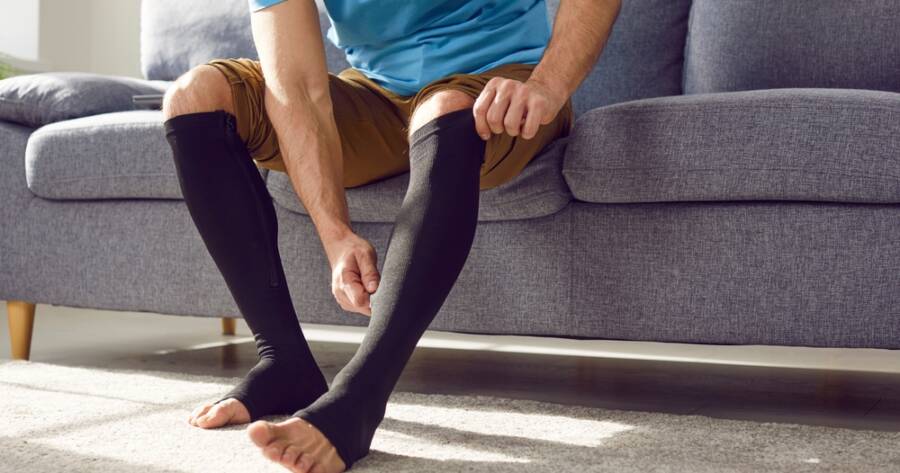Bulging, twisted veins that appear on the legs aren’t just a cosmetic concern, they can be a sign of underlying circulation issues. Varicose veins affect millions and may cause discomfort, swelling, or fatigue. While often harmless, they can worsen over time if left untreated. Knowing what to watch for and exploring treatment options can help restore both comfort and confidence.
What Are Varicose Veins?
Varicose veins occur when the valves in your veins do not function properly, causing blood to pool and the veins to become swollen and enlarged. This condition is most common in the legs because standing and walking increase pressure on the veins in the lower body. If you have varicose veins, you might notice that they appear dark purple or blue and are often raised, giving a bulging or twisted appearance.
Symptoms of Varicose Veins
The symptoms of varicose veins can vary, depending on the severity of the condition. If you have varicose veins, you might experience:
- Visible Swollen Veins
One of the most recognizable signs of varicose veins is the appearance of enlarged, twisted veins that are often blue or purple. They may become more noticeable after prolonged periods of standing or sitting. - Aching and Heaviness
If you have varicose veins, you might feel an aching or heavy sensation in your legs, especially after standing for long periods. This feeling of heaviness could become more pronounced as the day progresses. - Swelling
Swelling around the ankles and feet may occur, especially if you have been sitting or standing for extended periods. You could also notice changes in skin color or texture near the affected veins. - Itching and Skin Changes
Varicose veins may cause the skin around the area to become dry, itchy, or irritated. If left untreated, skin changes such as discoloration, inflammation, or even ulcers could develop over time.
Treatments for Varicose Veins
The treatment for varicose veins depends on the severity of symptoms and the potential complications they could cause. If you are concerned about varicose veins, discussing treatment options with a healthcare professional might help you choose the best approach for your situation.
1. Lifestyle Changes
In mild cases, lifestyle changes might be enough to manage the symptoms of varicose veins. If you want to reduce discomfort or prevent varicose veins from worsening, you could consider the following:
- Exercise: Regular physical activity might help improve circulation and prevent blood from pooling in your veins. Low-impact exercises like walking, swimming, or cycling could be particularly effective.
- Elevating Your Legs: Elevating your legs when sitting or resting might help reduce pressure on the veins and promote better circulation.
- Avoiding Prolonged Sitting or Standing: If you find that your symptoms worsen after being in one position for too long, you might want to take regular breaks to move around or shift positions.
2. Compression Stockings
Compression stockings are often recommended for managing varicose veins. These specially designed socks or stockings apply gentle pressure to the legs, which could help promote blood flow and prevent swelling. If worn regularly, compression stockings might reduce symptoms like aching, heaviness, and swelling. However, they may not eliminate the appearance of varicose veins entirely.
3. Minimally Invasive Procedures
If lifestyle changes and compression stockings do not provide sufficient relief, a healthcare provider might recommend minimally invasive procedures to treat varicose veins. Some options include:
- Sclerotherapy: Sclerotherapy involves injecting a solution directly into the affected veins, which could cause them to collapse and eventually fade away. This treatment might be effective for smaller varicose veins and spider veins.
- Laser Therapy: Laser treatments use targeted light energy to close off varicose veins, causing them to gradually fade. This procedure might be suitable if you prefer a less invasive approach with minimal recovery time.
- Radiofrequency or Endovenous Laser Ablation: These techniques involve using heat from radiofrequency energy or a laser to close the affected veins. The treated veins will gradually be absorbed by the body, and blood flow will be redirected to healthier veins.
Finding Relief and Managing Varicose Veins Effectively
Varicose veins can be both a cosmetic concern and a source of discomfort, but with the right management strategies, you might be able to reduce symptoms and improve your quality of life. Whether through lifestyle changes, compression therapy, or minimally invasive procedures, there are a variety of treatment options available. Consulting with a healthcare provider could help you determine the best approach for your unique situation and lead you toward effective symptom relief and improved well-being.
